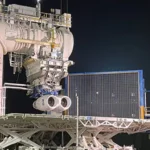Researchers in Germany are working on a novel graphene-based filtration system that could revolutionise how air inside the cabin is kept free of viruses.
The consortium led by Christian-Albrechts University of Kiel, in partnership with Airbus and Lufthansa, is working on the AEROGrAFT project to produce heatable aero-graphene foams which collect micro/nano particulates and kill viruses and bacteria.
This uniquely heatable air filtration system will reduce the cleaning time of existing filters and extend their life, saving aerospace companies costs related to both maintenance and aircraft downtime.
Key to the design of these new filters is the two-dimensional nanomaterial graphene, which forms the basis of the three-dimensional structure.
Developed in collaboration with Naturality Research & Development, Spain and Lufthansa Technik, Phi-Stone, and Sixonia Tech in Germany, AEROGrAFT’s foams are made from aerographene, a very low-density graphene-based material.
Promise of graphene
Graphene, first isolated in 2004, is a one-atom-thick layer of carbon atoms arranged in a hexagonal lattice.
While it is one million times thinner than a human hair, it is also incredibly strong – stronger than steel and diamond. In addition, it is flexible and an excellent conductor of electricity and heat.
This allows many applications in composite materials, and the full benefits it can bring to the aerospace sector are still being discovered.
Efficiency
Speaking to FINN, Prof. Dr. Rainer Adelung, chair for functional nanomaterials at Kiel University, said: “The idea of the AEROGrAFT project is to prolong the life of the filters, making it more efficient in terms of less maintenance and less waste. The structure consists of hollow tubes with a diameter of just a few micrometres.
“Unlike normal filters, these can be heated so that you can refresh the filter, so you do not have to throw it away, you can sterilise everything instead.
“If you have coronavirus or other nasty guests inside of the aeroplane filter, they are killed immediately.”
After a flight and when the passengers have disembarked, the filter can be heated to several hundred degrees centigrade, leaving them sanitised and ready to be used for the next flight without any delay.
The filters can be used within the cabin as well as to avoid dust and contaminants reaching the internal workings of the engine.
AEROGrAFT is one of the Graphene Flagship’s Spearhead Projects, which are EU-funded and designed to develop graphene-enabled prototypes into commercial applications.
The Graphene Flagship is the EU’s largest research project ever, with a budget of 1 billion euros.
Subscribe to the FINN weekly newsletter

